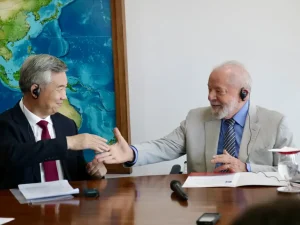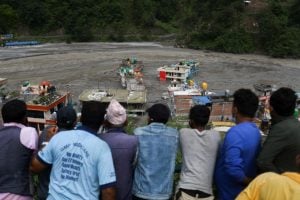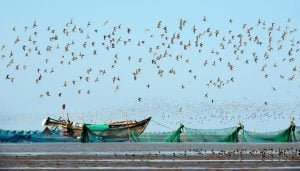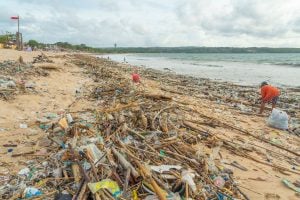In 2015, Nepal passed a new Constitution, which mandated a radical shift towards inclusive representation. Under Articles 215, 216, 220, 222 and 223, a certain portion of elected positions were reserved for underrepresented groups. The 2017 municipal elections, held for the first time in two decades, saw almost 40% of seats in 753 constituencies reserved for women. 18 women were elected as mayors or rural municipal chairs, with an additional 718 women elected as deputy mayors or vice-chairs. In the subsequent 2022 elections, 25 women were elected as mayors or chairs and 564 women were elected as deputy mayors or vice-chairs.
It has been argued that women leaders tend to prioritise wellbeing, health and natural resource management. Historically, Nepalese women had rarely occupied such senior local leadership roles; these elections presented an opportunity to observe whether the presence of women in leadership positions would bring about a shift in how sustainable governance was practiced in Nepal.
Our analysis is drawn from scoping studies conducted by the International Water Management Institute for two CGIAR initiatives between 2022 and 2023. These studies were conducted in Khotang (eastern Nepal), Surkhet (western Nepal) and Sarlahi (central-southern Nepal), as part of the Mixed Farming Systems and NEXUS Gains initiatives. Although the sample is limited, covering only three out of Nepal’s 77 districts, the studies indicated that women leaders advocated for sustainable development pathways that focused on the environment. However, their ability to effect change was often hampered by dated socio-cultural norms.
Women leaders’ aspirations and successes
During our interactions, we sought to understand how these women leaders framed the developmental challenges they faced. For instance, Bimala Rai who was elected deputy mayor of Halesi Tuwachung municipality in Khotang in 2017 and then mayor in 2022, said she was focused on addressing water scarcity – both for drinking and irrigation. Her constituency is drought-prone and had officially been “declared [a] dry zone by [the] government of Nepal,” she said. According to Rai, agriculture was essential to securing food sufficiency and boosting commercial activity.
Rai was particularly proud of her work to improve social stability and advance economic empowerment. “Forming women’s agriculture cooperatives in each ward, providing them [with a] revolving fund of USD 750-2,250 as a startup for [a] mother’s group within the municipality, acknowledging the roles of 118 female community health workers by increasing their incentives from USD 8 to USD 11 per month and allocating USD 30 annually in the name of a baby girl,” she said. This gendered birthright sum is repeated every year for the first four years of a girl’s life, with the full 120 USD available for withdrawal when the girl turns 15, encouraging greater attention to girls’ wellbeing, especially among poorer families. According to UNICEF: “In Nepal, 33% of children born into the poorest households will not survive to their fifth birthday compared to 13% of children from the richest households.” There is also a noticeable gender gap in the child population, with boys still outnumbering girls.
Men [still] outnumber women in staffing and elected positions and therefore male counterparts undermine women’s issues during planningMaina BK, deputy mayor of Gurbhakot municipality in Surkhet
For Kalpana Katuwal, mayor of Barahathawa municipality in Sarlahi, agriculture was equally critical. “Krishi [agriculture] is the main source of people’s jibikoparjan [livelihoods] in my municipality,” she said. “Lack of electricity for bhumigat pani [groundwater] pumping is a major problem. I have prioritised agriculture electrification to provide groundwater access for farmers.” An IWMI survey conducted earlier this year showed that around 60% of farmers in her municipality used electric water pumps, a significant contrast to the rest of the country, where diesel pumps, which are more costly and environmentally damaging, predominate.
The municipality’s support, especially from leaders like the mayor, plays a critical role in the electrification process, as the location of electricity poles is determined by the local government. If these poles are not located within an accessible distance from agricultural fields, it becomes challenging for farmers to utilise electricity to power their pumps.
Meanwhile, social inclusion was a major focus for Maina BK, deputy mayor of Gurbhakot municipality in Surkhet. As a Dalit woman from a historically repressed community, she recognised that “focus of vikas [development] in Nepal is about purbadhar bikas [infrastructure development]” and that, “investing in the skills development of local communities, especially marginalised groups, is low priority.” To address this gap, she used her influence to allocate funds for small enterprises targeting women and marginalised communities through a Deputy Mayor Entrepreneurial Development Programme, which provided training and subsidies ranging from USD 375-750 to help them set up their own businesses.
Barriers to transformative actions
Despite their vision and bold leadership, these women leaders face numerous challenges in putting their ideas into practice. Maina BK, for instance, initially had plans for a scholarship programme. “I had a vision of developing local human resources in the technical sectors such as krishi (agriculture) and batabaran (environment),” she said. “I proposed an idea of scholarship for [five-seven] poor students to pursue careers in these fields, but others did not agree.”
Likewise, mayor Rai encountered similar resistance. “When I propose a separate budget for women, people think it is for me. There is also a perception that women related programmes should be led by women only,” she said.
Patriarchal norms continue to limit women’s ability to lead. As Maina BK explained: “Men [still] outnumber women in staffing and elected positions and therefore male counterparts undermine women’s issues during planning. Nor do they raise women’s issues.”
The way forward for Nepal’s women leaders
The experiences of these women highlights both the potential and the challenges they face in addressing Nepal’s development needs. With issues such as inadequate water access, food insecurity, lack of access to new technology and the out-migration of men and the young, Nepal’s women leaders are increasingly bearing the brunt of these challenges, which are further compounded by climate change.
Women leaders in local government are not only capable of driving positive change, but they are also eager to do so. To support their efforts, development interventions should focus on overcoming deep-rooted social barriers that discourage women from taking up these roles and then hinder their impact when they do. Establishing networks of women leaders to amplify their voices, share experiences, provide peer support and foster collaboration is essential. Moreover, developing women-led municipalities as ‘role models’ for inclusive, just and locally-led development and mentoring women leaders in managing the water-energy-food-ecosystems nexus, would be a step forward in co-creating sustainable development pathways for Nepal.








